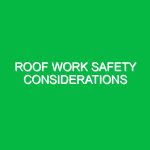Hand and power tools are essential components in a vast array of industries, from construction to manufacturing and beyond. These tools, while invaluable for efficiency and productivity, carry significant risks if not handled correctly. Understanding the relationship between hand and power tools and health, safety, and environment (HSE) practices is crucial for maintaining safe working conditions and preventing accidents. This article delves into the world of hand and power tools, examining their hazards, safety precautions, and the regulations governing their use.
Understanding Hand and Power Tools
Hand tools, as the name suggests, are tools that are operated manually. Examples include hammers, screwdrivers, pliers, and wrenches. Power tools, on the other hand, are powered by an external source, such as electricity, batteries, or compressed air. Examples include drills, saws, and sanders. The relevance of these tools in the HSE domain cannot be overstated. Proper handling and safety measures are critical to preventing injuries and ensuring a safe working environment.
Potential Hazards and Risks Associated with Hand and Power Tools
While hand and power tools are designed to enhance productivity, they also pose several hazards that can lead to injuries or accidents. Understanding these hazards is the first step toward implementing effective safety measures.
Physical Injuries
One of the most common risks associated with hand and power tools is physical injury. These can range from minor cuts and bruises to severe injuries like amputations or fractures. For instance, a worker using a circular saw without appropriate guards may risk severe lacerations. Similarly, improper use of hand tools can lead to strains and sprains, particularly in the wrists and shoulders. According to the Bureau of Labor Statistics, hand and power tool-related injuries accounted for thousands of workplace injuries each year, highlighting the importance of safety practices.
Electrical Hazards
Power tools, particularly those that are electric, pose electrical hazards. These can include electric shocks, which can occur if the tool is damaged or improperly used. A case in point is a worker who used a frayed extension cord to power a drill, resulting in a severe electric shock. Regular inspection of cords and tools can mitigate this risk significantly.
Noise-Induced Hearing Loss
Many power tools produce loud noises that can lead to hearing loss over time. The noise generated by tools such as jackhammers or pneumatic drills can exceed safe decibel levels. According to the Centers for Disease Control and Prevention (CDC), prolonged exposure to noise levels above 85 decibels can cause hearing damage. It is essential for workers to wear appropriate hearing protection when using such tools.
Vibration Risks
Using power tools often exposes workers to vibration, which can lead to conditions like Hand-Arm Vibration Syndrome (HAVS). This condition affects blood vessels, nerves, and joints, causing numbness and reducing grip strength. For example, a construction worker who frequently uses a jackhammer may suffer from HAVS if proper precautions are not taken.
Best Practices and Safety Precautions
To mitigate the risks associated with hand and power tools, implementing best practices and safety precautions is essential. Here are some actionable recommendations:
Training and Education
Proper training is the cornerstone of safety when using hand and power tools. Workers should be educated on the correct usage of tools, safety features, and potential hazards. A well-structured training program can significantly reduce the likelihood of accidents. For instance, a construction company might implement a workshop where workers practice using tools under supervision, ensuring they understand both the operation and the safety protocols.
Personal Protective Equipment (PPE)
Wearing the right personal protective equipment (PPE) is vital. Depending on the tools being used, this may include gloves, safety goggles, ear protection, and hard hats. For instance, when using a power saw, wearing safety goggles can protect against flying debris. In a real-life scenario, a carpenter who neglected to wear goggles while cutting wood suffered an eye injury from a splinter, underscoring the importance of PPE.
Regular Maintenance and Inspection
Regular maintenance of tools can prevent many accidents. Workers should inspect tools before use to check for damage or wear, such as frayed cords or dull blades. A simple inspection could prevent a situation where a worker uses a faulty drill that could malfunction mid-operation. Additionally, tools should be cleaned and stored properly after use to maintain their functionality and safety.
Safe Work Practices
Implementing safe work practices is essential. This includes keeping work areas tidy to reduce tripping hazards, using tools for their intended purpose, and never bypassing safety features. For example, a worker should not use a wrench as a hammer, as this could lead to tool breakage and injury. Furthermore, using tools in well-lit areas can enhance visibility and reduce the risk of accidents.
Emergency Preparedness
Even with the best safety measures in place, accidents can occur. Therefore, it is crucial to have an emergency response plan. This may include having first aid kits on-site, knowing the location of emergency exits, and ensuring all workers are aware of how to respond in case of an accident. Training workers on basic first aid can make a significant difference in outcomes during emergencies.
Regulations and Standards Governing Hand and Power Tools
Several regulations and standards guide the use of hand and power tools in various industries, aimed at ensuring safety and minimizing risks. The Occupational Safety and Health Administration (OSHA) sets forth standards for tool usage and safety protocols, emphasizing the need for safe practices in the workplace.
OSHA Standards
OSHA regulations require employers to provide safe working conditions and to ensure that tools are maintained in a safe condition. For example, OSHA’s standards for power tools (29 CFR 1926.300) stipulate that all tools must be capable of performing the intended task safely. Employers must also provide appropriate training in tool use and implement safety measures to protect workers.
American National Standards Institute (ANSI) Guidelines
The American National Standards Institute (ANSI) also has established guidelines that specify safety requirements for hand and power tools. These standards address tool design, performance, and safety features. Compliance with ANSI standards often helps businesses minimize risks and enhance worker safety.
International Standards
In addition to national regulations, there are international standards, such as those set by the International Organization for Standardization (ISO). ISO standards provide a framework for ensuring quality and safety in the use of tools across various industries globally.
Conclusion
Hand and power tools are indispensable in many workplaces, but they come with inherent risks that cannot be overlooked. Understanding these risks and implementing safety measures is not just a regulatory requirement; it is a moral obligation to protect workers. By prioritizing training, using appropriate PPE, conducting regular inspections, and adhering to established regulations, employers can foster a culture of safety that significantly reduces accidents and injuries. In the end, a commitment to health, safety, and environment practices is not only beneficial for workers but also enhances overall productivity and morale in the workplace.


